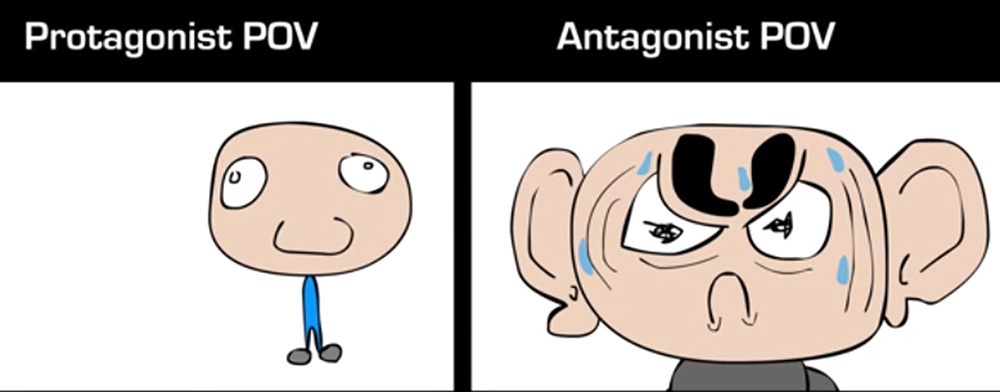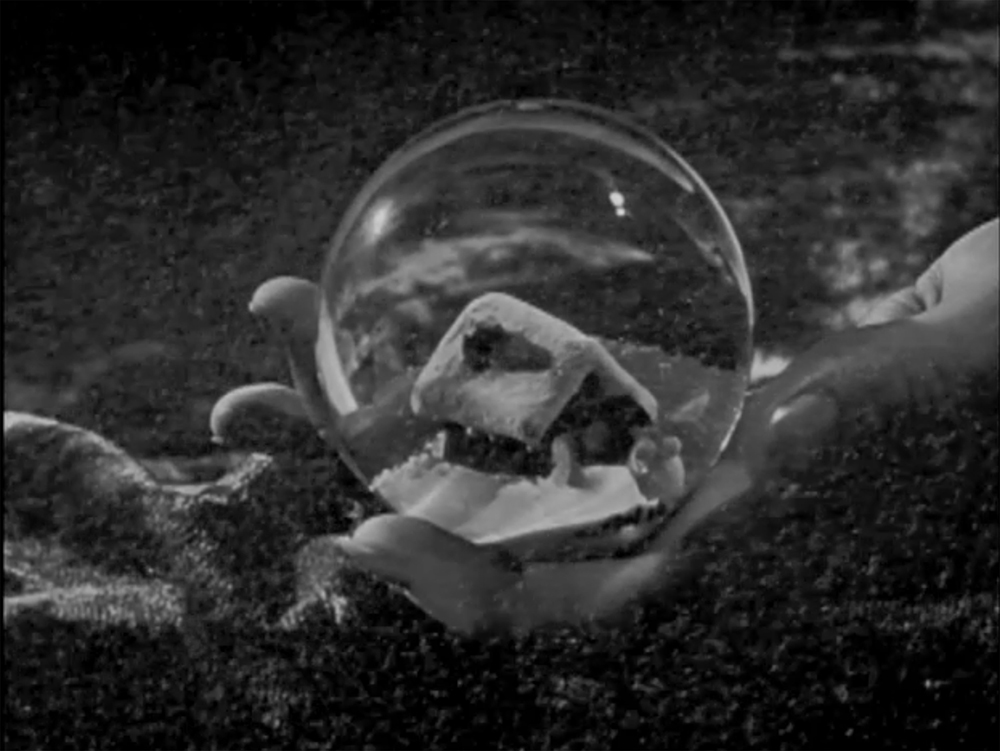VOL.45, NO. 2
From Books to Molecules: Adaptation Studies in the 21st Century
Walter Metz
Over the past decade, the exhibition of narrative audio-visual art has undergone the most radical change, perhaps ever, but certainly since the inception of commercial television in the late 1940s. Physical media for the purpose of exhibition, such as film prints and DVDs, have almost completely disappeared. High-end resolution formats—in the guise of Blu-Ray disks and HDTV screens—persevere, but almost every other sector of the industry has converted to a fully digital realm, where the delivery of streaming audio-visual material via the Internet, cable, and satellite is normative.
These changes in exhibition have left textual media scholars in a most unenviable position. We know that what we study—film and television narrative—is more important than ever, but we are less sure of how to study it, and what exactly the “it” might be. In terms of both the sheer volume of production occurring globally given the ease of digital image making, and the overall quality, particularly of contemporary American television, we are living in an audio-visual golden age. However, many of us over the age of forty never aspired to become “new media” scholars, nor have we grown up on the correct side of the digital media demographic divide.
While problematic for most traditional academics, these changes could be tremendously beneficial for adaptation scholars. Conceptually, Adaptation Studies is a discipline that is founded on a belief in the special power produced by, and fascination generated by, intermediality. Heretofore, scholars have too narrowly applied this unique theoretical orientation toward textual and audio-visual confluences. Developing from traditional literary studies, analyses of adaptations of novels into film have dominated the discipline. But, it would take very little conceptual retrofitting to vastly expand our domain of inquiry.
The dissimulation of American audio-visual media from the tightly regulated work of a handful of film studios and even fewer television networks to dozens of formats (from media displayed on subway cars to the Jumbotron at college and professional sporting events) gives us the opportunity to deploy what we know about the transformation of narrative material from one medium to another. When we write about a film based on a novel, we attend to both how the literary and the cinematic material exchanges with the world that matters to us, in aesthetic, social, and political registers. We can use these methods to unpack how the audio-visual material on YouTube packages the world in such new ways, yet tethered back to the traditions of literary and film production.
Indeed, while it takes quite a bit of work to wade through the unfiltered materials available on the Internet, the nature of globally communal cultural production means that there is plenty of audio-visual material that merits our attention. To take just one example, consider a video posted on 1 March 2015 to YouTube by “Kewin Lan, Filmmaker.” “Video Essay About Parallel Editing” uses engaging, humorous voice-over narration and stick-figure animation to position the editing of the films of D. W. Griffith (The Lonedale Operator, The Birth of a Nation, and Intolerance) as a critical method for understanding Christopher Nolan’s Inception (2010).

The video essay stops short of fully exploring its terrific idea. Ariadne (Ellen Page) deliberately jumps off a collapsing building near the end of Inception, invoking the Little Sister’s jump during the “Gus Chase” sequence of The Birth of a Nation, an intertextual confluence of tremendous significance for understanding both films. Furthermore, as Gilles Deleuze predicted, Griffith’s editing is a manipulation of space, while Nolan’s is one of time. Nonetheless, Lan’s exploration of the continuation of parallel editing techniques in contemporary Hollywood offers a compelling engagement with film studies.
Of course, I do not want to overstate the case: “Video Essay About Parallel Editing” had 599 views when I checked on 24 February 2016. By contrast, Psy’s “Gangnam Style” music video has well over 2.5 billion views on YouTube. Regardless, Lan’s video sits at the liminal space between a number of conceptual oppositions—public and private, student and teacher, scholar and fan, narrative and documentary—that lie in the wheelhouse for Adaptation scholars. How does Lan adapt the procedures of academic film studies for the web? How does his performance as an online instructor relate to mine as a classroom performer? Furthermore, Lan’s intertextual reading of Inception could only be imagined in a world where Adaptation Studies has been taught for decades.
Until now, I have emphasized how the differences in our contemporary media environment from more traditional configurations provide new opportunities for Adaptation Studies. Perhaps we should consider the opposite, and emphasize the unacknowledged similarities between these seemingly disparate cultural terrains. I have become more interested in the materialities of media culture: How does the physical world show up in contemporary film and television, regardless of its form? In the terms of Adaptation Studies, how does an audio-visual text adapt the world to its own needs? The adaptation of a novel into a film is only a small part of our potential domain of inquiry.
As an example, when the babysitter in the last episode of season two of Fargo (“Palindrome,” FX, 12/14/2015) reads Albert Camus’s The Myth of Sisyphus (1942), the book’s presence in the image causes a materialization of Existentialism that then sends the characters and the audience of the show spiraling. We sit watching Betsy Solverson (Cristin Milioti) die a horrible death from cancer. She is certainly Sisyphus, condemned by the gods to suffer endless days as she tries to hide the pain from her family. However, perhaps the spectator is also positioned as Sisyphus, if not condemned, certainly destined to watch suffering on the screen in the attempt to stave off the darkness of our real lives.
In the best of culture studied by adaptation scholars—certainly Fargo (Joel and Ethan Coen, 1996) and its excellent television adaptation fit this bill—our viewing efforts are richly rewarded. Camus’s take on the story was not to emphasize the gods’ punishment, but Sisyphus’s decision to once again persevere and roll the rock back up the hill. In short, the materialization of Camus in Fargo is a moment that demands the attention of a 21st century Adaptation Studies.
However, there is nothing particularly sacrosanct about the book’s materiality. Any object carries such power: the snow globe in Citizen Kane (1941) opens up the entire history of a material artifact that transcends its purely narrative function. Charles Foster Kane sees the bucolic snowy scene in the trinket, and reminisces about the moment when his mother sold him to Thatcher, while he was playing with Rosebud outside such a log cabin as is depicted within the snow globe. But beyond this, the image adapts a whole world implied by the history of such an object. Popularized at the 1889 Paris World’s Fair, the snow globe gave attendees a miniature Eiffel Tower in the palm of their hands, which they could take home as a memento. A landscape that one can shake to put things into motion reminds us of that most modern of devices, the cinema itself. When Orson Welles places the snow globe into the frames of Citizen Kane, he adapts an ever-expanding sense of the world that it is our job to analyze.

More expansive than this, we should explore how the fundamental materials of the world are shaped—adapted in our terms—by their presentations in film and television. In a recent episode of “The Big Bang Theory” (“The Helium Insufficiency,” CBS, 10/26/2015), Leonard (Johnny Galecki) and Sheldon (Jim Parsons) need to buy helium off of the black market in order to complete an experiment. While we cannot see the helium—a seedy guy in a van wheels it around in a stainless steel dewar—the history of helium, once the most tightly controlled of American natural resources, now harvested in Qatar, becomes the motor of both the drama and the comedy of the episode. If narrative audio-visual productions adapt Jane Austen novels, they just as surely adapt molecules such as helium to their own purposes. One job of criticism is to unpack how textual artifacts at all levels sculpt the world for aesthetic, narrative, and ideological purposes.
The explosion of the traditional domains of Adaptation Studies—novels and films—into dozens of modes of audio-visual experience (from audio books to vines) leaves our discipline at a crossroads. I suggest there are three solutions, which I offer in the order of my increasing interest in them. 1) We can throw out the baby with the bathwater, labeling our moment as one of “New Media,” and treat those of us who study film and literature as intellectual dinosaurs. 2) We can employ an additive solution, contributing individual studies of how each of these forms adapts the world into new audio-visual experiences, but ones tethered to the more traditional domains that we already understand well: comic books and vine videos, reality television and YouTube, iBooks and pedagogy, etc. 3) We can use this moment of transition to step back and ask the more fundamental question we should have been asking all along. W. J. T. Mitchell may have missed the mark when he asked, “What do pictures want?” I instead propose: What are images made of? How do they take a physical material world and adapt it into an audio-visual experience, which no matter how it presents itself, has fascinated billions of viewers for well over a hundred years, and shows no sign of abating any time soon? Let this essay serve as my clarion call for a materialist, molecular turn in Adaptation Studies.
Works Cited
Deleuze, Gilles. Cinema 2: The Time-Image. Minneapolis: U of Minnesota P, 1989. Print.
— — —. Cinema 1: The Movement-Image. Minneapolis: U of Minnesota P, 1986. Print.
Lan, Kewin. “Video Essay About Parallel Editing.” YouTube. Posted 1 Mar. 015. Web. https://www.youtube.com/watch?v=zrF7ENeueCs.
Mitchell, W. J. T. What Do Pictures Want? The Lives and Loves of Images. Chicago: U of Chicago P, 2006. Print.